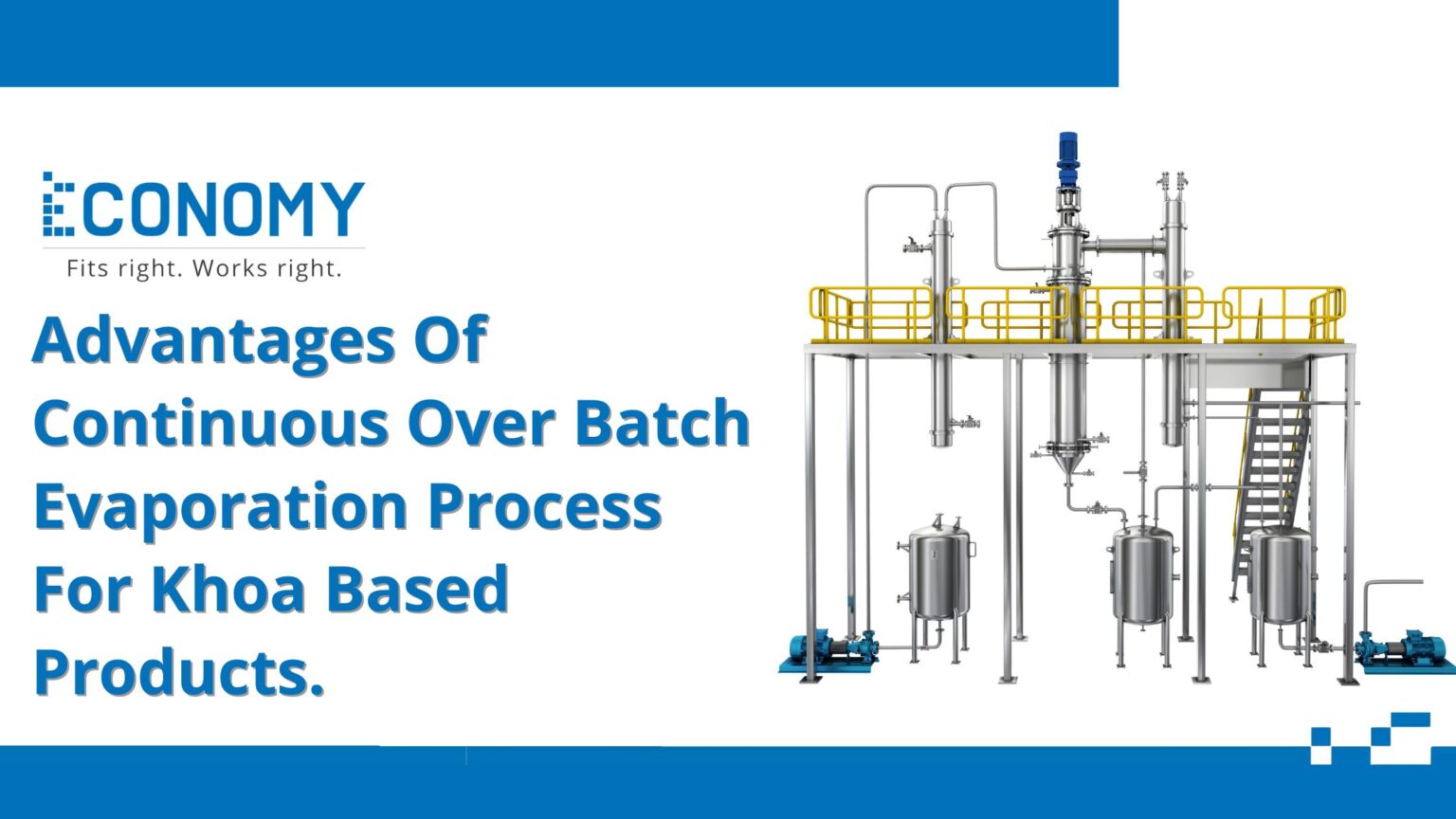Khoa, a popular dairy product in India, is made by evaporating milk to a semi-solid consistency. Traditionally, the batch evaporation process has been used for its production. However, continuous evaporation processes are becoming increasingly preferred due to several advantages. Here, we explore these benefits in detail.
1. Efficiency and Time-Saving
Higher Throughput
Continuous evaporation systems are designed for uninterrupted operation, which means they can process larger volumes of milk in a shorter period compared to batch processes. This leads to higher throughput, making continuous systems more suitable for large-scale production.
Reduced Downtime
Batch processes involve significant downtime between batches for tasks such as cleaning, setup, and cooling. Continuous systems, on the other hand, minimize downtime since they do not require frequent stops and starts. This ensures a more consistent production flow and better utilization of equipment.
2. Consistency and Quality Control
Uniform Product Quality
In batch processes, variations in temperature and time can lead to inconsistencies in the final product. Continuous evaporation provides better control over processing parameters, resulting in a more uniform product quality. The ability to maintain consistent heating and evaporation rates ensures that each unit of product is similar in texture, moisture content, and flavor.
Better Control Over Processing Parameters
Continuous systems often come with advanced monitoring and control technologies. These allow for real-time adjustments to be made, ensuring optimal processing conditions. This precise control helps in maintaining the desired characteristics of khoa, enhancing the overall quality of the product.
3. Energy Efficiency
Reduced Energy Consumption
Continuous evaporation processes are generally more energy-efficient than batch processes. They make better use of the heat energy applied, often incorporating heat recovery systems that recycle energy within the process. This leads to significant reductions in energy consumption and operating costs.
Lower Operational Costs
The energy efficiency of continuous systems translates into lower operational costs. Additionally, the reduced need for frequent cleaning and maintenance in continuous processes further decreases the cost of labor and materials.
4. Scalability and Flexibility
Easy Scaling
Continuous evaporation systems are easier to scale up compared to batch processes. When there is a need to increase production capacity, continuous systems can be expanded with additional modules or by increasing the capacity of existing ones. This modularity makes continuous systems highly flexible and adaptable to changing production demands.
Adaptability to Various Product Specifications
Continuous systems can be adjusted to meet various product specifications without significant downtime. This flexibility is particularly beneficial for manufacturers who produce different types of khoa or other dairy products, as it allows for quick and efficient changes in production.
5. Improved Hygiene and Safety
Reduced Risk of Contamination
Continuous evaporation systems are designed to minimize the risk of contamination. The enclosed nature of the process reduces exposure to contaminants, and the reduced need for manual handling further enhances product safety. Additionally, the ability to automate cleaning-in-place (CIP) procedures ensures thorough and consistent cleaning, reducing the risk of microbial contamination.
Enhanced Safety for Workers
Continuous processes reduce the need for manual intervention, which enhances safety for workers. The automated nature of these systems minimizes the risk of accidents related to handling hot equipment and materials. Improved safety protocols and reduced human involvement contribute to a safer working environment.
6. Environmental Benefits
Lower Waste Generation
Continuous evaporation processes typically generate less waste compared to batch processes. The efficient use of resources and energy leads to fewer by-products and reduced waste. This not only benefits the environment but also aligns with sustainability goals, making continuous systems a more eco-friendly option.
Reduced Emissions
The energy efficiency of continuous systems also results in lower emissions of greenhouse gases and other pollutants. By reducing the overall energy consumption, continuous processes contribute to a smaller carbon footprint, making them a more sustainable choice for the dairy industry.
Conclusion
The advantages of continuous over batch evaporation processes for khoa-based products are numerous and significant. Continuous systems offer higher efficiency, better product consistency, improved energy efficiency, scalability, enhanced hygiene, safety, and environmental benefits. As the demand for high-quality dairy products increases, the shift towards continuous evaporation processes is likely to continue, driven by the need for more efficient, cost-effective, and sustainable production methods. Embracing continuous evaporation technology can provide dairy manufacturers with a competitive edge, ensuring the production of superior khoa while meeting the demands of modern consumers and regulatory standards.

